kottke.org posts about lists
From Popular Mechanics, a list of survival tips covering a variety of outdoor situations, from watching a baseball game to cutting down trees to drinking too much water during exercise.
We all know that dehydration can be dangerous, leading to dizziness, seizures, and death, but drinking too much water can be just as bad. In 2002, 28-year-old runner Cynthia Lucero collapsed midway through the Boston Marathon. Rushed to a hospital, she fell into a coma and died. In the aftermath it emerged that she had drunk large amounts along the run. The excess liquid in her system induced a syndrome called exercise-associated hyponatremia (EAH), in which an imbalance in the body’s sodium levels creates a dangerous swelling of the brain.
From NPR, a searchable sortable archive of the best commencement speeches, from 1774 to the present. What a resource. Two of my favorites, by David Foster Wallace and Steve Jobs, are represented.
Each speech is tagged by “theme or take-home message”, basically a taxonomy of commencement speech messaging. The most popular themes are:
12. Be kind
11. Yolo
10. Make art
9. Balance
8. Dream
7. Remember history
6. Embrace failure
5. Work hard
4. Don’t give up
3. Inner voice
2. Tips
1. Change the world
Trite stuff perhaps, but delivered in the right way and by the right person, it makes people wanna run through walls. Let’s go! (via @tcarmody)
Conor Friedersdorf has published his picks for the best journalism of 2013. This is always a great list. And you’re smart enough not to pooh-pooh it just because everyone else’s best of 2013 list came out in late November, right? Because the stuff on this list is evergreen? Good.
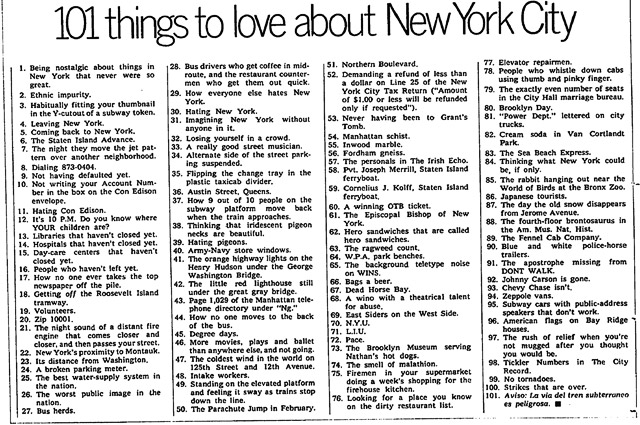
From the NY Times Magazine in June 1976, a list of 101 things to love about New York City. Some of the list is evergreen:
1. Being nostalgic about things in New York that were never so great.
11. Hating Con Edison.
25. The best water-supply system in the nation.
42. The little red lighthouse still under the great gray bridge.
And other items on the list, not so much:
8. Dialing 873-0404.
24. A broken parking meter.
43. Page 1,029 of the Manhattan telephone directory under “Ng.”
57. The personals in The Irish Echo.
Scouting New York has an explanation of some of the items on the list. Apparently 873-0404 was the number for the Dial-A-Satellite hotline; you could call it to get information about satellites passing overhead. (via @mkonnikova)
In an item on Ain’t It Cool News about the working title for Star Wars VII (The Ancient Fear!), a pair of comments list fourteen things about the Star Wars movies as bad as or worse than Jar Jar Binks:
1. Dance number added to Jedi
2. CGI Jabba added to A New Hope
3. Han/Greedo scene changed in A New Hope
4. Horrible acting in the prequels even by the good actors
5. Obi-Wan riding around on Yoshi in Revenge of the Sith
6. Anakin/Padme love story
7. Jake Lloyd
8. R2-D2 flying
9. Hayden’s ghost added to end of Jedi
10. Rick McCallum
11. Midichlorians
12. Virgin birth of Anakin
13. Vader as C-3POs maker and R2’s buddy
14. Han/Jabba scene added in ANH
Meesa agree with most of this list.
From the editors of The American Scholar, the ten best sentences. Presumably in all of literature? Here’s one of them, from James Joyce’s A Portrait of the Artist as a Young Man:
I go to encounter for the millionth time the reality of experience and to forge in the smithy of my soul the uncreated conscience of my race.
Why are these the ten best sentences?
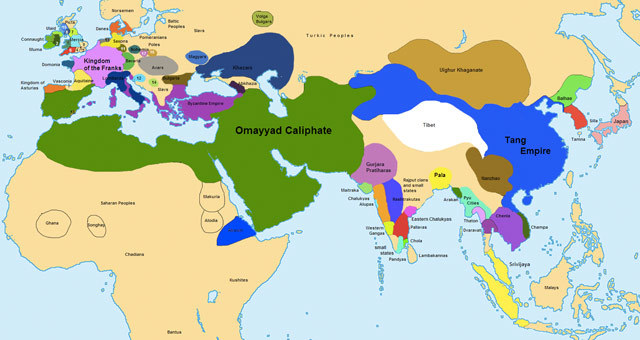
From Max Fisher at Vox, 40 maps that explain the Middle East.
Maps can be a powerful tool for understanding the world, particularly the Middle East, a place in many ways shaped by changing political borders and demographics. Here are 40 maps crucial for understanding the Middle East — its history, its present, and some of the most important stories in the region today.
(via @jbenton)
Paul Ford set himself the task of picking five great works of software and he came up with Microsoft Office, Adobe Photoshop, Pac-Man, Unix, and Emacs.
I propose a different kind of software canon: Not about specific moments in time, or about a specific product, but rather about works of technology that transcend the upgrade cycle, adapting to changing rhythms and new ideas, often over decades.
As with everything Paul writes, it’s worth clicking through to read the rest.
From God’s Twitter account, a new set of ten commandments:
1 Laugh.
2 Read.
3 Say please.
4 Floss.
5 Doubt.
6 Exercise.
7 Learn.
8 Don’t hate.
9 Cut the bullshit.
10 Chill.
Amen.
Time Out polled more than 100 experts to find the 100 best animated movies. Here’s the top 10 (minus the top pick…you’ll have to click through for that):
10. Fantastic Mr. Fox
9. The Nightmare Before Christmas
8. Snow White and the Seven Dwarfs
7. The Iron Giant
6. Dumbo
5. The Incredibles
4. Toy Story
3. My Neighbor Totoro
2. Spirited Away
I’m delighted to see Fantastic Mr Fox on the list…it’s an underrated effort by Wes Anderson that will continue to grow in esteem as the years pass. No Wall-E in the top 10 though? I don’t know about that. It clocks in at #36, behind Chicken Run (the least of Aardman’s efforts in my mind) and Up, which is maybe my least favorite Pixar film. (via @garymross)
Farnam Street is featuring a handout given by the late David Foster Wallace to his fiction writing class in 2002. It’s titled YOUR LIBERAL-ARTS $ AT WORK and covers five common usages gotchas.
2. And is a conjunction; so is so. Except in dialogue between particular kinds of characters, you never need both conjunctions. “He needed to eat, and so he bought food” is incorrect. In 95% of cases like this, what you want to do is cut the and.

From Typographica, a list of their favorite typefaces from 2013. As you’ll see, good type design is happening all over the globe.
As evidence of that diversity, the 53 typefaces selected from 2013 were created by designers from at least 20 countries. […] This new phase of globalization and democratization of the font market began in earnest about a decade ago, propelled by newly accessible digital tools, online commerce, and post-graduate education in type design. It is a sea change. For centuries, places like Argentina, Brazil, Croatia, Lebanon, and New Zealand were vastly underrepresented in a type design community that was dominated by western Europe and North America. (And this only goes for Latin-based type. The burgeoning production of fonts in other scripts tells another fascinating story.) We will have much more detail about these changes in an upcoming report by Ruxandra Duru on the current state of typefounding around the world.
One that caught my eye is Clear Sans.
Historian Dan Snow collects and debunks ten myths about World War I. Including:
7. Tactics on the Western Front remained unchanged despite repeated failure
Never have tactics and technology changed so radically in four years of fighting. It was a time of extraordinary innovation. In 1914 generals on horseback galloped across battlefields as men in cloth caps charged the enemy without the necessary covering fire. Both sides were overwhelmingly armed with rifles. Four years later, steel-helmeted combat teams dashed forward protected by a curtain of artillery shells.
They were now armed with flame throwers, portable machine-guns and grenades fired from rifles. Above, planes, that in 1914 would have appeared unimaginably sophisticated, duelled in the skies, some carrying experimental wireless radio sets, reporting real-time reconnaissance.
Huge artillery pieces fired with pinpoint accuracy - using only aerial photos and maths they could score a hit on the first shot. Tanks had gone from the drawing board to the battlefield in just two years, also changing war forever.
(via @daveg)
Kathryn Schulz went looking for those rare moments in literature where “punctuation pops its head up over the prose” and found five noteworthy uses. For instance, a period at the end of Primo Levi’s The Periodic Table (spoilers?):
“It is that which at this instant, issuing out of a labyrinthine tangle of yeses and nos, makes my hand run along a certain path on the paper, mark it with these volutes that are signs: a double snap, up and down, between two levels of energy, guides this hand of mine to impress on the paper this dot, here, this one.”
And Nabokov’s Lolita made the list, but I expected this bit:
Lolita, light of my life, fire of my loins. My sin, my soul. Lo-lee-ta: the tip of the tongue taking a trip of three steps down the palate to tap, at three, on the teeth. Lo. Lee. Ta.
rather than:
“My very photogenic mother died in a freak accident (picnic, lightning) when I was three…”
(via df)
From the Washington Post, an interesting collection of 80 maps (in two parts: one and two) that explain the world and how it works. One of my favorites is this map of actual European discoveries of land previously unknown by humans.
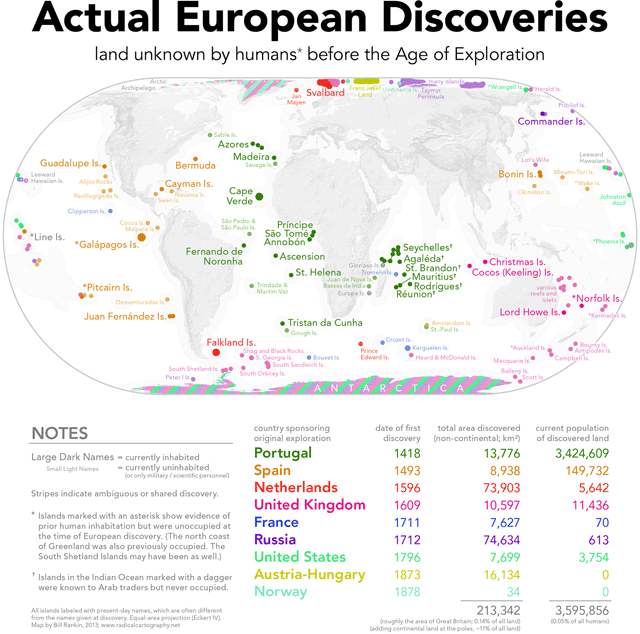
Antarctica is all stripey on that map and I realized I didn’t know who had first clapped their peepers on the only continent discovered in the last millennia, so I did some reading on the subject. From the Holy Book of Wikipedia:
The first land south of the parallel 60° south latitude was discovered by the Englishman William Smith, who sighted Livingston Island on 19 February 1819. A few months later Smith returned to explore the other islands of the South Shetlands archipelago, landed on King George Island, and claimed the new territories for Britain.
In the meantime, the Spanish Navy ship San Telmo sank in September 1819 when trying to cross Cape Horn. Parts of her wreckage were found months later by sealers on the north coast of Livingston Island (South Shetlands). It is unknown if some survivor managed to be the first setting foot on these Antarctic islands.
The first confirmed sighting of mainland Antarctica cannot be accurately attributed to one single person. It can, however, be narrowed down to three individuals. According to various sources, three men all sighted the ice shelf or the continent within days or months of each other: von Bellingshausen, a captain in the Russian Imperial Navy; Edward Bransfield, a captain in the British navy; and Nathaniel Palmer, an American sealer out of Stonington, Connecticut. It is certain that the expedition, led by von Bellingshausen and Lazarev on the ships Vostok and Mirny, reached a point within 32 km (20 mi) from Princess Martha Coast and recorded the sight of an ice shelf at 69°21′28″S 2°14′50″W that became known as the Fimbul ice shelf. On 30 January 1820, Bransfield sighted Trinity Peninsula, the northernmost point of the Antarctic mainland, while Palmer sighted the mainland in the area south of Trinity Peninsula in November 1820. Von Bellingshausen’s expedition also discovered Peter I Island and Alexander I Island, the first islands to be discovered south of the circle.
(via @daveg)
From Bret Victor, a reading list of meaty material from the past year. His Reading Tip #1 in the sidebar is how I’d like my ideal self to read:
It’s tempting to judge what you read:
I agree with these statements, and I disagree with those.
However, a great thinker who has spent decades on an unusual line of thought cannot induce their context into your head in a few pages. It’s almost certainly the case that you don’t fully understand their statements.
Instead, you can say:
I have now learned that there exists a worldview in which all of these statements are consistent.
And if it feels worthwhile, you can make a genuine effort to understand that entire worldview. You don’t have to adopt it. Just make it available to yourself, so you can make connections to it when it’s needed.
Fantastic tip.
Quora user Murali Krishnan sifted through Q&A site Quora for the best answers and found 270 of them. Among the topics covered are technology, gender, the meaning of life, mathematics, travel, and looks like almost everything else, including some fascinating examples of ancient technology. Looks like one of my favorites didn’t make the cut: Domhnall O’Huigin’s answer to What is the political situation in the Mario universe?
For the Oobject gift guide this year, “almost nothing is affordable”. Items include a bank vault door from the 1920s ($50,000), JFK’s chess set ($475,000), and a console for the Hubble Space Telescope ($75,000).

It’s more a nerd wish list than gift guide, the opposite of Tyler Brûlé’s effort, penned from the empty upper deck (first class, naturally) of a flight to Singapore. Brûlé’s earnest advice for your holiday shopping? Build a house in Australia for next year’s holidaymaking:
With a bit of planning and a good construction team you could surprise friends and family by commissioning Brisbane-based architects Richards & Spence to build you a little beachside compound somewhere in Queensland. This year you could roll up a set of plans to place under the tree with a promise that this time next year you’ll all be wandering around in kaftans and low-slung trunks drinking fancy, fruity cocktails.
Sounds brill.
Inspired by the A History of the World in 100 Objects project done by the BBC and the British Museum, Adrian Hon presents A History of the Future in 100 Objects, presented from the perspective of someone writing in 2082. From the introduction:
Every century is extraordinary, of course. Some may be the bloodiest or the darkest; others encompass momentous social revolutions, or scientific advances, or religious and philosophical movements. The 21st century is different: it represents the first time in our history that we have truly had to question what it means to be human. It is the stories of our collective humanity that I hope to tell through the hundred objects in this book.
I tell the story of how we became more connected than ever before, with objects like Babel, Silent Messaging, the Nautilus-3, and the Brain Bubble - and how we became fragmented, both physically and culturally, with the Fourth Great Awakening, and the Biomes.
With the Braid Collective, the Loop, the Steward Medal, and the Rechartered Cities, we made tremendous steps forward on our long pursuit of greater equality and enlightenment — but the Locked Simulation Interrogations, the Sudan-Shanghai Letter, the Collingwood Meteor, and the Downvoted all showed how easy it was for us to lapse back into horror and atrocity.
We automated our economy with the UCS Deliverbots, the Mimic Scripts, the Negotiation Agents, and the Old Drones, destroying the entire notion of work and employment in the process; and we transformed our politics with Jorge Alvarez’s Presidential Campaign, and the Constitutional Blueprints.
The book is available on the Kindle.
In the early 1960s, French director Jean-Luc Godard put together a list of the Ten Best American Sound Films. The list included:
The Great Dictator (Charles Chaplin)
Vertigo (Alfred Hitchcock)
Singin’ in the Rain (Kelly-Donen)
The Lady from Shanghai (Orson Welles)
The list appeared as one of a series in Cahiers du Cinema, the influential French film magazine. (via @DavidGrann)
From Pitchfork, a list of the best album covers from 2013. My favorite is this one from Tyler, The Creator, which looks more or less like the opposite of a rap album.

I also liked Michael Cina’s cover for Fort Romeau (which he adapted from his very fetching art) and of course Yeezus, which is this year’s unignorable album in every way. (via @pieratt)
In celebration of his 44th birthday, Jay Z ranked his solo albums:
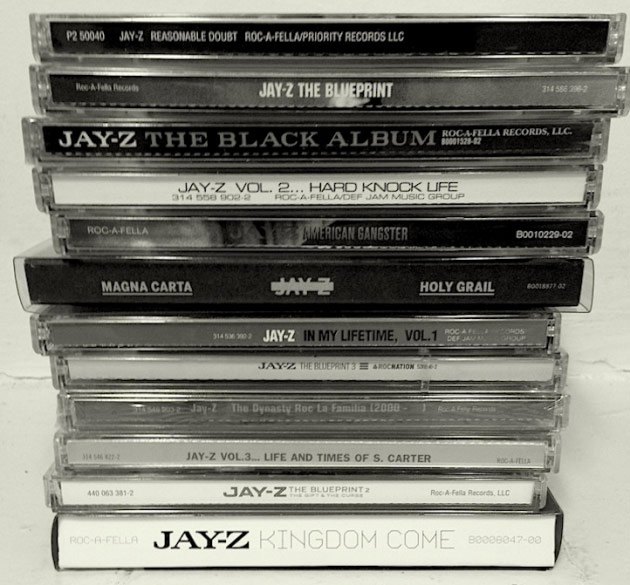
Here’s the annotated list:
1. Reasonable Doubt (Classic)
2. The Blueprint (Classic)
3. The Black Album (Classic)
4. Vol. 2 (Classic)
5. American Gangster (4 1/2, cohesive)
6. Magna Carta (Fuckwit, Tom Ford, Oceans, Beach, On the Run, Grail)
7. Vol. 1 (Sunshine kills this album… fuck… Streets, Where I’m from, You Must Love Me…)
8. BP3 (Sorry critics, it’s good. Empire (Gave Frank a run for his money))
9. Dynasty (Intro alone…)
10. Vol. 3 (Pimp C verse alone… oh, So Ghetto)
11. BP2 (Too many songs. Fucking Guru and Hip Hop, ha)
12. Kingdom Come (First game back, don’t shoot me)
(via @anildash)
In 1898, an editor named Clement K. Shorter made a list of the 100 best novels (with an additional limit of one/author).
1. Don Quixote - 1604 - Miguel de Cervantes
2. The Holy War - 1682 - John Bunyan
3. Gil Blas - 1715 - Alain René le Sage
4. Robinson Crusoe - 1719 - Daniel Defoe
5. Gulliver’s Travels - 1726 - Jonathan Swift
6. Roderick Random - 1748 - Tobias Smollett
7. Clarissa - 1749 - Samuel Richardson
8. Tom Jones - 1749 - Henry Fielding
9. Candide - 1756 - Françoise de Voltaire
10. Rasselas - 1759 - Samuel Johnson
So much on there I’ve never even heard of. Compare this list with that of the best novels of the 20th century…how many of those novels and authors will readers be scratching their heads over in 2113? See also a contemporary list of the best books from before 1900. (via mr)
This month, Smithsonian magazine tells the story of America using 101 objects drawn from the 19 musuems and research centers of the Smithsonian Institution. Among the objects are the original Star Spangled Banner flag, the passenger pigeon, the polio vaccine, the pill, and Benjamin Franklin’s Experiments and Observations on Electricity.
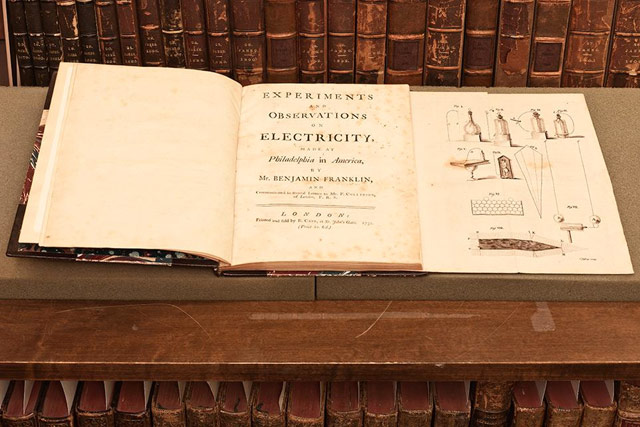
A companion book, The Smithsonian’s History of America in 101 Objects, is available.
The Atlantic asked a group of historians, scientists, and engineers to rank the 50 greatest innovations since the invention of the wheel. Here they are.
21. Nuclear fission, 1939
Gave humans new power for destruction, and creation
22. The green revolution, mid-20th century
Combining technologies like synthetic fertilizers (No. 11) and scientific plant breeding (No. 38) hugely increased the world’s food output. Norman Borlaug, the agricultural economist who devised this approach, has been credited with saving more than 1 billion people from starvation.
23. The sextant, 1757
It made maps out of stars.
Kareem Abdul-Jabbar has written a list of 20 things boys can do to become men.
6. Fight your fear of the unknown.
We all have a tendency to hate what we don’t understand, whether it comes in the form of different food, different cultures, or different ideas. There was a Yale study in which researchers examined the brains of people as they were presented with proof that an opinion they held was wrong. MRIs showed that when those people immediately rejected the new evidence, their brains released an addictive chemical that made them feel good. In that way our own bodies are actually encouraging our ignorance and fear. Fight that impulse. Becoming a man means growing, learning, and understanding-not cowering under a blanket with a handful of comforting notions.
(By the way, don’t confuse physical bravery with intellectual bravery. It’s easier to jump out of a plane-hopefully with a parachute-than it is to change your mind about an opinion. Acts of physical bravado will give you an initial rush, but exploring a new culture or examining a new idea will mature you and make you the kind of person others will be interested in.)
This list of rules for the contemporary American male is both awesome and awful, seemingly written by a douchebag Dalai Lama. Some of the rules are thoughtful:
Measure yourself only against your previous self.
Staying angry is a waste of energy.
If you believe in evolution, you should know something about how it works.
And some are not:
Desserts are for women. Order one and pretend you don’t mind that she’s eating yours.
Yes, of course you have to buy her dinner.
Pretty women who are unaccompanied want you to talk to them.
The internet these days is chock full of must-reads, must-sees, can’t-live-withouts, and lists (oh, the lists!) of things you need to do before you die.
As I understand it, we are now all legally obliged to watch Breaking Bad by the end of 2013. Our prisons are already full to bursting with people who failed to watch The West Wing or The Wire when they were expressly told to. I even saw a woman prosecuted last week for not having read Gone Girl. What was she thinking?
Richard Osman offers a way out of the must-see mess so that you can enjoy life again.
Of 100 Greatest Novels, you can happily ignore all of them except Scoop and The Prime of Miss Jean Brodie. I am assuming you’ve already read To Kill a Mockingbird for O-level. Read Shakespeare if you want to, but you don’t have to. (Though if you don’t ever read him, you’re not allowed to say he’s rubbish. Deal?) You should probably read Great Expectations, but feel free to leave Dickens there. And I think Wuthering Heights is the only Emily Brontë novel worth reading (someone will rise to this, just you wait and see).
The Motley Fool collected 20 snippets of business wisdom uttered by Amazon CEO Jeff Bezos over the years.
All businesses need to be young forever. If your customer base ages with you, you’re Woolworth’s.
Totes agree with this, which is why I use words like “totes”. (Obvs.)
This is a presentation and therefore missing a bunch of key context, but Michael Dearing’s The Five Cognitive Distortions of People Who Get Stuff Done is interesting reading nonetheless. The five distortions are:
1. Personal exceptionalism
2. Dichotomous thinking
3. Correct overgeneralization
4. Blank canvas thinking
5. Schumpeterianism
That last one is likely a head-scratcher to those of us without economics backgrounds; here’s what Dearing has to say about it:
Definition - sees creative destruction as natural, necessary, and as their vocation
Benefits - fearlessness, tolerance for destruction and pain
Deadly risk - heartless ambition, alienation
(via ★interesting)
Newer posts
Older posts













Stay Connected